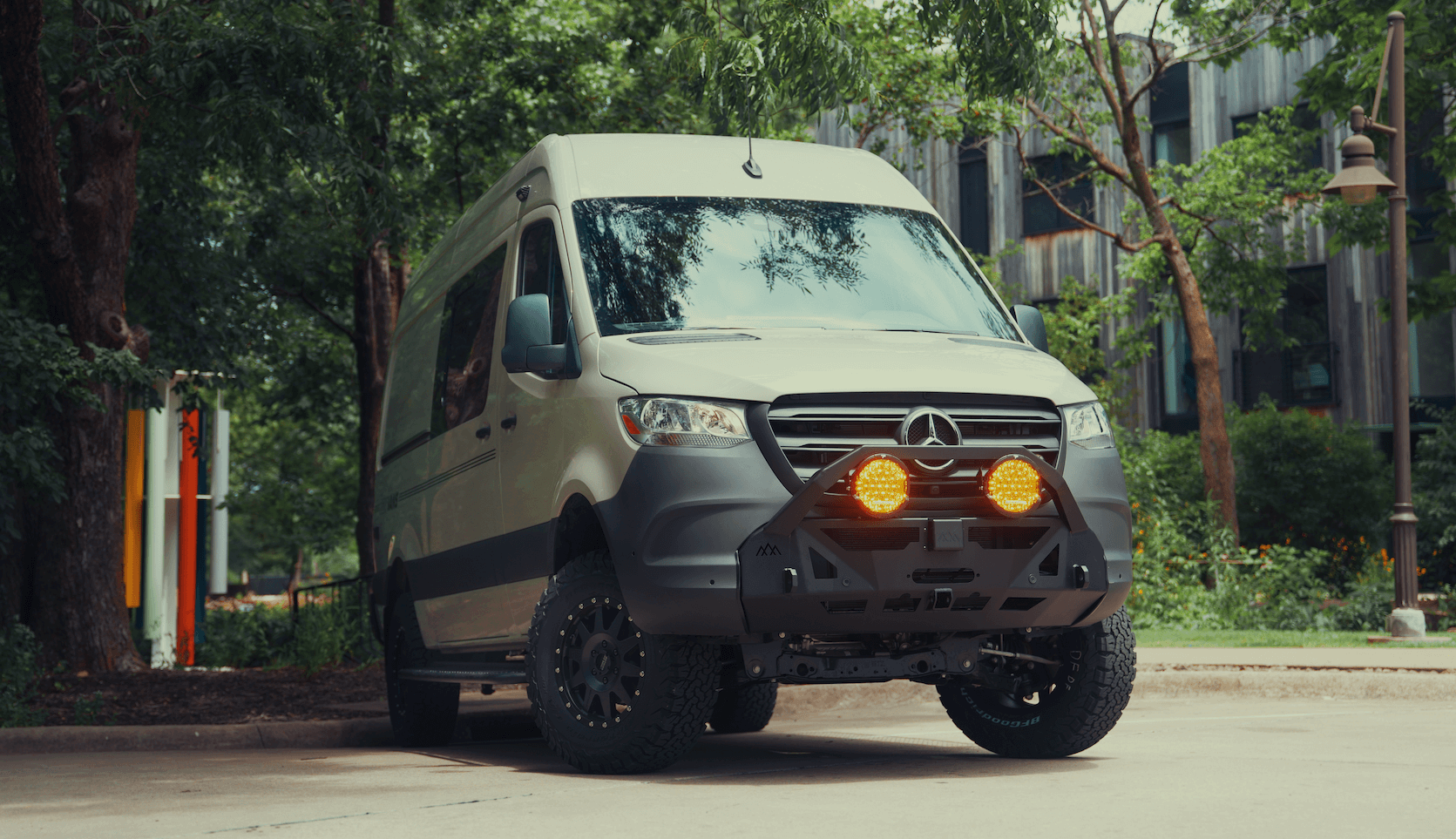Recreational Vans

Campsite access by vehicle size is about fit, not just length on a spec sheet. Campground roads curve through trees, rocks, and slopes that were never drawn for boxy shapes or extended wheelbases. Site pads come in many shapes, some short but wide, others long but narrow. Overhead branches can be the real gatekeeper, and a low culvert or crowned road can snag long overhangs. Your rig might technically meet the posted limit yet still struggle if the approach is tight.
Length determines whether you can occupy the pad without hanging onto the road. Wheelbase matters for turns inside loops and tight switchbacks. Many older national and state park loops were built when smaller campers were the norm, which often favors rigs under about thirty feet. Modern RV parks commonly list longer pull through sites, though internal turns and islands can still surprise large setups. If you tow, include the full bumper to hitch length, and remember that bikes or a cargo box add to the footprint.
Height governs tree canopy and low structures. Forest roads can arch to nine or ten feet in spots, even when the average clearance seems higher. Width plus mirrors matters when passing stone walls or posts at site entries. Ground clearance, approach, breakover, and departure angles decide whether a pad with a sharp lip or a crowned loop scrapes your underbody. Lifted rigs can clear ruts better, but added height may bring branch contact, so plan for both.
Back in sites ask for a gentle angle of approach and room to realign. Pull through sites feel easier yet can narrow near the exit. A long rear overhang may swing wide and clip a post or brush. Use a spotter when visibility drops, and keep windows open to hear directions. If the pad is short but the shoulder is reinforced, ask the host for permission before placing tires off the edge. Leveling blocks can help but do not fix a site that is fundamentally too small.
Start with honest measurements. Record bumper to bumper length, true height with racks or solar, and mirror to mirror width. Add the rear ladder, spare, or bikes. Then study the route and the destination. Booking platforms often include site pad length, surface type, and a notes field with road warnings. Look for site photos and loop maps, then check satellite and street level imagery to preview turns and tree cover.
Match road types to your rig. Paved loops welcome almost any size that meets posted limits. Graded gravel is common in state parks and forests, yet potholes and washboards can stress long wheelbases or stiff suspensions. Forest service spurs and dispersed sites demand extra care. Seasonal closures, spring thaw, and recent storms can change conditions quickly, so call the ranger district when in doubt.
Filters help but do not replace local knowledge. Sort for pad length at or above your rig, then read recent reviews from similar vehicle owners. Pay attention to mentions of tight turns, low limbs, or soft shoulders. If you plan a one night stopover on a long drive, favor pull through sites near the entrance to avoid late night navigation through complex loops.
Arrive before dark when possible. Light reveals low branches and rim biting potholes that headlights can flatten into shadows. Walk the loop if a turn looks tight. Remove rear bikes or cargo if they tip the balance between making the turn and bumping a post. Use a spotter who watches both corners, not just the side near the hook ups. Carry a small pruning saw for dead twigs that tap your roof, and always ask the host before cutting anything living.
If a site is borderline for your size, request a different pad rather than forcing it. Never block the loop or spill into shared space. Keep tires on stable ground to prevent rutting. Respect quiet hours, dim exterior lights, and pack out anything that arrived with you. In dispersed areas, camp on durable surfaces and avoid widening pullouts for personal convenience.
When a favorite campground posts a length limit, remember it is not arbitrary. The limit protects roads, trees, and neighboring campers. A slightly smaller rig often opens more options and reduces stress at the end of a travel day. That is why many travelers choose compact builds that still support off grid living.
For drivers who want access first and amenities second, consider how your rig is configured. A shorter wheelbase, dialed suspension, low profile roof accessories, and purposeful storage can unlock more sites without drama. If you are planning a new build, designing around the places you want to camp will pay off every weekend.
Strong builds help, but thoughtful planning is the real unlock. Scout before you commit, favor daylight, and give yourself room to back out when a road narrows. With the right measurements and mindset, you can match your vehicle size to the right campsite and settle in without a tense arrival.
Ready to fit more campsites into your map. Our team in Fayetteville builds custom vans and overland upfits that balance comfort with access, tuned for the trails and campgrounds you actually visit. Tell us your target parks and road types, and we will shape a rig around those limits so arrival feels easy.
Ready to explore more sites with fewer compromises. Tell us how you travel, and OZK Customs will design a van that fits the places you want to camp. Submit the form to start your custom plan and delivery timeline.
ADDRESS:
6159 E Huntsville Rd, Fayetteville, AR 72701
PHONE:
(479) 326-9200
EMAIL:
info@ozkvans.com